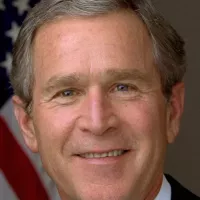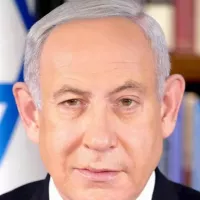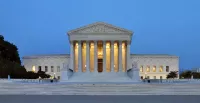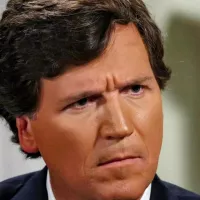Hamas is a Sunni Islamist Palestinian nationalist political organization with a military wing, the Qassam Brigades. It has governed the Gaza Strip since 2007. The group is known for its armed resistance against Israel, including rocket attacks and other militant activities. It was founded in 1987, during the First Intifada, as an offshoot of the Muslim Brotherhood. Hamas's ideology combines Palestinian nationalism with Islamic fundamentalism. It has been designated as a terrorist organization by several countries.
June 1967: Palestinian state "on all territories occupied in June 1967"
On June 28, 2006, Hamas signed the second version of the 'Palestinians' Prisoners Document' which supports the quest for a Palestinian state "on all territories occupied in June 1967".
1967: Israeli occupation of Gaza
After the Israeli occupation of Gaza in 1967, the Brotherhood in Gaza refused to join the resistance boycott against Israel.
1967: Acquiescing to 1967 borders
Hamas began acquiescing to 1967 borders in the agreements it signed with Fatah.
1967: Hamas de facto recognition of the 1967 borders
Hamas has offered more to the Israelis than Israeli major parties including Likud have offered in return to the Palestinians, both with its de facto recognition of the 1967 borders.
1967: Hamas accepts the 1967 borders
Hamas has repeatedly accepted the 1967 borders in signed agreements and in its 2017 charter.
1967: Hamas proposes a truce contingent on the creation of a Palestinian state based on the 1967 borders
Hamas originally proposed a 10-year truce to Israel, contingent on the creation of a Palestinian state based on the 1967 borders. Sheikh Ahmed Yassin indicated that such truce could be extended for 30, 40, or even 100 years, but it would never signal a recognition of Israel.
1967: Proposed Palestinian state based on 1967 borders
In 1967, the proposed borders for a Palestinian state were set. Hamas later offered a long-term truce with Israel, contingent on the creation of a Palestinian state based on these 1967 borders.
1967: Quest for a Palestinian state
In 2006, Hamas signed the Palestinian Prisoners' Document which supports the quest for a Palestinian state "on all territories occupied in 1967".
1967: Hamas Leader Khaled Mashal accepts 1967 borders
In April 2008, Khaled Mashal said to Jimmy Carter, Hamas would accept a Palestinian state on the 1967 borders and accept the right of Israel to live as a neighbour if such a deal would be approved by a referendum among the Palestinians.
1967: Hamas willing to agree to Palestinian state along pre-1967 borders
In April 2024, Hamas' Khalil al-Hayya stated that Hamas is willing to agree to a truce of five years or more with Israel and convert into a political party if an independent Palestinian state is established along pre-1967 borders. This was considered a significant concession, but Israel would likely not consider it following the October 2023 attack.
1967: Haniyeh states willingness to live in calm within 1967 borders
In August 2006, Ismail Haniyeh stated that Hamas has no problem with a sovereign Palestinian state over all lands within the 1967 borders, living in calm.
1967: Khaled Mashal says Hamas "accepts a state on the 1967 borders with Jerusalem as its capital"
In January 2024, Khaled Mashal slighted "The West" and "the two-state solution," stating that the 1967 borders, representing only 21% of Palestine, were unacceptable. He reiterated that Hamas accepts a state on the 1967 borders with Jerusalem as its capital, complete independence, and the right of return without recognizing the legitimacy of the Zionist entity.
1967: Hamas accepts Palestinian state on 1967 borders if Palestinian referendum is conducted
In May 2010, Khaled Mashal stated that Hamas would accept a state "Israel" alongside a Palestinian state on the 1967 borders if a referendum of the Palestinian people endorsed it. In November 2010, Ismail Haniyeh proposed a Palestinian state on 1967 borders, with the resolution of the refugee issue, the release of Palestinian prisoners, and Jerusalem as its capital, subject to a Palestinian referendum.
1967: Acceptance of Palestinian state within 1967 territories
In November 2008, Hamas leader Ismail Haniyeh reiterated that Hamas was willing to accept a Palestinian state within the territories of 1967.
1967: Hamas government agreed to accept a Palestinian state that followed the 1967 borders
In November 2008, Ismail Haniyeh repeated to European members of parliaments the conditions for accepting a Palestinian state with 1967 borders and offering Israel a long-term truce (hudna), contingent on Israel recognizing Palestinian national rights, a proposal Israel allegedly declined.
1967: Palestinian state within the 1967 borders
In mid-2006, University of Maryland's Jerome Segal suggested that a Palestinian state within the 1967 borders and a truce for many years could be considered Hamas's de facto recognition of Israel.
1967: PLO recognizes Israel on 78% of the land of historic Palestine along the 1967 borders.
In the 1993 Oslo Accords, the PLO made a "historic concession" in recognizing Israel on 78% of the land of historic Palestine (along the 1967 borders), but was unable to convince Israel to recognize Palestine on the remaining 22% of the land.
1967: Hamas agrees to a Palestinian state based on the 1967 borders.
In the 2007 Mecca agreement and in the 2006 Palestinian Prisoners' Document, Hamas agreed to a Palestinian state based on the 1967 borders.
1967: Hamas states conditions for palestinian state with 1967 borders
On 1 December 2010, Ismail Haniyeh reiterated his November 2010 message, stating Hamas would accept a Palestinian state on the 1967 borders with Jerusalem as its capital, the release of prisoners, and resolution of the refugee issue, pending a referendum among all Palestinians.
1967: Hamas Charter Accepts Palestinian State in 1967 Borders
On 1 May 2017, Hamas published "A Document of General Principles and Policies", or the 2017 Hamas charter, accepting a Palestinian state within the 1967 borders without recognizing Israel.
1967: Haniyeh offers a Palestinian state in the 1967 borders.
On June 6, 2006, Ismail Haniyeh sent a letter to US President George W. Bush and Israel's leaders, offering a Palestinian state in the 1967 borders and a long-term truce.
1967: 1967 borders can be interpreted as a de facto acceptance of the preconditions for a two-state solution
Professor Mohammed Ayoob stated in his 2020 book, while discussing the 2017 Hamas charter, that "acceptance of the 1967 borders can be interpreted as a de facto acceptance of the preconditions for a two-state solution".
1973: Emergence from Mujama al-Islamiya Islamic charity
In 1973, Hamas emerged from Ahmed Yassin's Mujama al-Islamiya Islamic charity, which was affiliated with the Muslim Brotherhood.
December 1987: Brotherhood adopted a nationalist line under the name of Hamas
In December 1987, the Brotherhood adopted a more nationalist and activist line under the name of Hamas.
1987: Foundation of Hamas
In 1987, Ahmed Yassin founded the Hamas movement after the outbreak of the First Intifada against the Israeli occupation.
August 1988: Hamas publishes its first charter
In August 1988, Hamas published their first charter stating that "Israel" should be "eliminated" through a "clash with the enemies", a "struggle against Zionism" and "conflict with Israel".
1988: Hamas doesn't implement the 1988 charter as policy
After winning the 2006 elections, Hamas did not implement the 1988 Charter as policy, and instead agreed to work with the existing Palestinian political system.
1988: Hamas' original 1988 charter resembles Zionist Groups
Hamas vision in its original 1988 charter resembles the vision of certain Zionist groups regarding the same territory, as noted by several authors. This may suggest that Hamas's views were inspired by those Zionist perspectives.
1988: Mandate Palestine framed as Islamic waqf
In 1988, Hamas's Charter framed the Mandate Palestine as ‘Islamic waqf’ or endowment, under sovereignty of God.
1988: Hamas Charter Proclaims Jihad Against Jews
In 1988, the Hamas charter proclaimed that jihad against Jews is required until Judgement Day. Article 7 of the charter "openly dedicate(s) Hamas to genocide against the Jewish people". The charter attributes collective responsibility to Jews for various global issues.
1988: Hamas charter
In 1988, the Hamas charter was widely described as antisemitic.
1988: Ahmed Yassin Responds to Accusations of Hating Jews
In a 1988 interview, Ahmed Yassin, the founder of Hamas, responded to accusations that "Hamas hate Jews".
1988: Ḥamās glossed in the 1988 Hamas Covenant
In the 1988 Hamas Covenant, the acronym HMS was glossed by the Arabic word ḥamās (حماس) which means "zeal", "strength", or "bravery".
1988: Hamas Original Charter Becomes Historical Document
On 1 May 2017, Hamas published "A Document of General Principles and Policies", or the 2017 Hamas charter, accepting a Palestinian state within the 1967 borders without recognizing Israel. The original 1988 charter was relegated to historical status but not formally repudiated.
1988: Hamas' original 1988 charter is a call for armed struggle
Several authors have interpreted the 1988 Hamas charter as a call for armed struggle against Israel.
1988: Debate regarding the 1988 Hamas charter.
Since March 2006 until today, debates are running as to whether the original 1988 Hamas charter has since March 2006 become obsolete and irrelevant or on the contrary still spells out Hamas's genuine and ultimate goals.
1989: Campaign for polygamy in 1989
In 1989, during the First Intifada, a few Hamas followers campaigned for polygamy, and insisted women stay at home and be segregated from men. In the course of this campaign, women who chose not to wear the hijab were verbally and physically harassed.
1989: Hamas engages in armed conflict with Israel
Since the spring of 1989, Hamas is and was at war with Israel's army as part of the First Intifada.
1990: Palestinian exodus from Kuwait.
The cool relationship between Fatah and Kuwait owed to Arafat's support for Saddam during the First Gulf War, which lead to the Palestinian exodus from Kuwait (1990–91).
December 1992: Israel deports suspected Hamas members to Lebanon
In December 1992, Israeli authorities deported more than 400 Palestinians, suspected to be members of Hamas, to Southern Lebanon.
November 1993: Death of Emad Akel
Emad Akel died on November 24, 1993.
1993: PLO recognizes Israel
Tareq Baconi notes that Hamas has said it would accept mutual recognition of Israel in any consensus peace deal approved by other Palestinian parties and the population in a referendum. In the 1993 Oslo Accords, the PLO recognized Israel on 78% of the land of historic Palestine (along the 1967 borders).
1993: Proposed two stages of liberation of Palestine
With Hamas's 1993 Introductory Memorandum, Hamas broke away from the uncompromising character of their religious frame, and proposed two stages of liberation of Palestine: a short-term objective to establish a Palestinian state in Gaza and the West Bank, and a long-term objective still striving to liberate Mandate Palestine in its entirety.
1995: Hamas reiterates rejection of recognizing Israel
In 1995, Hamas repeated its rejection of any recognition of Israel.
1995: The United States designated Hamas as a terrorist organisation.
In 1995, the United States designated Hamas as a terrorist organization.
January 1996: Death of Yahya Ayyash
Yahya Ayyash died on January 5, 1996.
1998: Antisemitism in Hamas Ideology
In 1998, Esther Webman of the Project for the Study of Anti-Semitism at Tel Aviv University wrote that antisemitism was not the main tenet of Hamas ideology, but the Hamas Covenant had become an obstacle for the movement to be able to take part in diplomatic forums involving Western nations.
1999: Hamas proposes ceasefire with Israel
In 1999, the Hamas leadership proposed a long-term ceasefire with Israel in return for Israeli withdrawal of military troops and civilian illegal settlements from West Bank and Gaza Strip, release of all Palestinian prisoners, and the right of Palestinian self-determination.
2000: Hamas social institutions in West Bank and Gaza
By 2000, Hamas or its affiliated charities ran roughly 40% of the social institutions in the West Bank and Gaza.
2000: Attacks by Hamas
From 2000, Hamas was responsible for killing nearly 400 Israelis and wounding more than 2,000 in 425 attacks, according to the Israeli Ministry of Foreign Affairs.
2000: Statement on Fighting for Home and Rights
In 2000, Ahmed Yassin stated that Hamas does not hate Jews but will fight those who take their homes and expel them. He questioned the rights of Russian immigrants versus Palestinians who left their land more recently and asked for their rights to be restored.
2000: Hamas Described Holocaust as "Alleged"
In a 2000 press release, Hamas described Nazi Germany's genocide of European Jews as "so-called" and "an alleged and invented story with no basis".
2000: Saudi Arabia funded most of its operations from 2000 to 2004.
Saudi Arabia funded most of Hamas's operations from 2000 to 2004.
2001: Rocket attacks by Hamas and other groups
According to a 2010 Human Rights Watch report, by 2001, 15 civilians had been killed in rocket attacks by Hamas and other groups. Hamas claimed these rockets were aimed at military targets, attributing civilian casualties to weapon quality, while Human Rights Watch doubted this, suggesting civilians were intentionally targeted.
2001: Launch of Qassam rockets and mortar attacks into Israel
From 2001 through May 2008, Hamas launched more than 3,000 Qassam rockets and 2,500 mortar attacks into Israel.
2001: The European Union designated Hamas's military wing.
In 2001, the European Union designated Hamas's military wing as a terrorist organization.
March 2002: Netanya hotel suicide bombing
On March 27, 2002, Hamas committed its most deadly suicide bombing on a Netanya hotel. In this attack, 30 people were killed and 140 were wounded. The attack is also referred to as the Passover massacre.
July 2002: Death of Salah Shehade
Salah Shehade died on July 23, 2002.
September 2002: Publication of Al-Fateh magazine
In September 2002, Al-Fateh, a Hamas children's magazine, began publication biweekly in London and posted online. The magazine featured stories, poems, riddles, and puzzles.
November 2002: Canada designated Hamas as a terrorist organisation.
In November 2002, Canada designated Hamas as a terrorist organisation.
2002: Human Rights Watch report
In a 2002 report, Human Rights Watch stated that Hamas leaders "should be held accountable" for "war crimes and crimes against humanity" committed by the al-Qassam Brigades.
2002: Women's participation in jihad was permitted in 2002
The gender ideology outlined in the Hamas charter, their participation in jihad was permitted in 2002.
March 2003: Death of Ibrahim al-Makadmeh
Ibrahim al-Makadmeh died on March 8, 2003.
August 2003: Death of Ismail Abu Shanab
Ismail Abu Shanab died on August 21, 2003.
2003: Hamas Resumed Suicide Bombings in Israel
In 2003, Hamas resumed suicide bombings in Israel as a retaliatory measure after the failure of peace talks and an Israeli campaign targeting members of the upper echelon of the Hamas leadership, according to Stephen Atkins.
2003: The European Union designated Hamas as a terrorist organisation.
In 2003, the European Union designated Hamas as a terrorist organisation, following pressure from the US.
March 2004: Death of Ahmed Yassin
Ahmed Yassin died on March 22, 2004.
April 2004: Death of Abdel Aziz al-Rantisi
Abdel Aziz al-Rantisi died on April 17, 2004.
2004: Hudna is more than a ceasefire
Nuancing sheikh Ahmed Yassin's statements before 2004 about a hudna (truce) with Israel (see above), Hamas's (former) senior adviser Ahmed Yousef has said (at unknown date) that a "hudna" (truce, armistice) is more than a ceasefire and "obliges parties to use the period to seek a permanent, non-violent resolution to their differences."
2004: Saudi Arabia reduced its support to Hamas due to US pressure.
Saudi Arabia funded most of Hamas's operations from 2000 to 2004, but reduced its support due to US pressure in 2004.
2004: Khaled Mashal Recognized as Hamas Leader
Since 2004, Khaled Mashal was the recognized leader of Hamas.
2004: Attacks by Hamas
Until 2004, Hamas was responsible for killing nearly 400 Israelis and wounding more than 2,000 in 425 attacks, according to the Israeli Ministry of Foreign Affairs.
2005: Hamas supporting individuals with financial support in Gaza
By 2005, Hamas and other Islamic charities were supporting 120,000 individuals with monthly financial support in Gaza. As late as 2005, the budget of Hamas, drawing on global charity contributions, was mostly tied up in covering running expenses for its social programs.
2005: Hamas accepts the 1967 borders in agreements
Hamas has repeatedly accepted the 1967 borders in signed agreements in 2005.
2005: Hamas signed the Cairo Declaration
In 2005, Hamas also signed the Cairo Declaration, which emphasized the goal of ending the Israeli occupation and establishing a Palestinian state on the 1967 borders.
2005: Agreements with Fatah
In 2005, Hamas signed agreements with Fatah.
2005: Hamas signs the Palestinian Cairo Declaration
In 2005, Hamas signed the Palestinian Cairo Declaration, which confirms "the right of the Palestinian people to resistance in order to end the occupation, establish a Palestinian state with full sovereignty with Jerusalem as its capital".
January 2006: Hamas gained a large majority of seats in the Palestinian Parliament
In January 2006, Hamas gained a large majority of seats in the Palestinian Parliament, defeating the ruling Fatah party.
January 2006: Khaled Meshaal Denies Antisemitism
In January 2006, Khaled Meshaal, the chief of Hamas's political bureau, published an op-ed in The Guardian denying antisemitism on Hamas' part, stating that the Israeli–Palestinian conflict was political, not religious, and that Hamas has "no problem with Jews who have not attacked us".
January 2006: Al-Aqsa TV began broadcasting
On January 9, 2006, Al-Aqsa TV, a television channel founded by Hamas, began broadcasting in the Gaza Strip. The station has shown television programs, including children's television, which deliver antisemitic messages. Al-Aqsa TV is headed by Fathi Ahmad Hammad.
March 2006: Hamas legislative program
In March 2006 Hamas published its government program in which Hamas claimed sovereignty for the Palestinian territories but did not repeat its claim to all of mandatory Palestine.
March 2006: Hamas publishes government program after election victory
In March 2006, after winning the Palestinian legislative elections, Hamas published its government program claiming sovereignty for Palestinian territories and declaring willingness to have contacts with Israel in mundane affairs, stating that recognizing Israel is a decision for the Palestinian people.
April 2006: Mahmoud al-Zahar visited Saudi Arabia, Syria, Kuwait, Bahrein, Qatar, the United Arab Emirates, Yemen, Libya, Algeria, Sudan and Egypt.
In April 2006, following Hamas's victory in the Palestinian elections, Mahmoud al-Zahar, then foreign minister, conducted a diplomatic tour. He visited Saudi Arabia, Syria, Kuwait, Bahrein, Qatar, the United Arab Emirates, Yemen, Libya, Algeria, Sudan and Egypt, meeting with Prince Faysal and discussing issues like Palestinians stuck on the Syrian-Iraqi border. He also met unofficially with officials from Western Europe in Qatar.
May 2006: Hamas foreign minister visited Indonesia, Malaysia, the Sultanate of Brunei, Pakistan, China, Sri Lanka and Iran.
In May 2006, the Hamas foreign minister visited Indonesia, Malaysia, the Sultanate of Brunei, Pakistan, China, Sri Lanka and Iran. The minister also participated in China–Arab States Cooperation Forum. Also, Ismail Haniyeh in 2006 visited Egypt, Syria, Kuwait, Iran, Lebanon, Qatar and Saudi Arabia.
June 2006: Ismail Haniyeh Outlines Truce Conditions to U.S. President
In June 2006, Hamas senior official Ismail Haniyeh wrote to U.S. President George W. Bush about the conditions for accepting a Palestinian state with 1967 borders and offering Israel a long-term truce (hudna), contingent on Israel recognizing Palestinian national rights.
June 2006: Hamas signs second version of Prisoners Document
On June 28, 2006, Hamas signed the second version of the 'Palestinians' Prisoners Document' supporting a Palestinian state on territories occupied in 1967 and recognizing the PLO as the sole legitimate representative of the Palestinian people.
June 2006: Hamas will accept verdict of popular Palestinian referendum
On June 6, 2006, Hamas' MP Riad Mustafa stated that while "Hamas will never recognize Israel", if a popular Palestinian referendum would endorse a peace agreement including recognition of Israel, "we would of course accept their verdict".
June 2006: Haniyeh offers truce to President Bush and Israel
On June 6, 2006, Ismail Haniyeh sent a letter to US President George W. Bush and Israel's leaders, offering a Palestinian state in the 1967 borders and a long-term truce.
August 2006: Haniyeh states willingness to live in calm within 1967 borders
In August 2006, Ismail Haniyeh stated that Hamas has no problem with a sovereign Palestinian state over all lands within the 1967 borders, living in calm.
November 2006: Hamas proposes truce for Palestinian state in 1967 borders
In November 2006, Hamas again proposed a truce for many years to Israel in exchange for a Palestinian state in the 1967 borders.
November 2006: Hamas offers long-term truce to Israel
In November 2006, Hamas offered Israel a long-term truce in exchange for a Palestinian state created along the 1967 borders with East Jerusalem as its capital, renewing automatically each time.
2006: Hamas Smuggled Weapons into Gaza
According to a 2006 report by the rival Fatah party, Hamas had smuggled between several hundred and 1,300 tons of advanced rockets, along with other weaponry, into Gaza.
2006: Hamas agrees to work within the Palestinian political system
After winning the 2006 elections, Hamas agreed to work with the existing Palestinian political system instead of implementing the 1988 Charter as policy.
2006: Hamas Accused of Executing Fatah Supporters
Following the 2006 Israeli conflict with Gaza, Hamas was accused of systematically rounding up, torturing, and summarily executing Fatah supporters suspected of supplying information to Israel. Human Rights Watch estimates that several hundred Gazans were "maimed" and tortured in the aftermath of the conflict.
2006: Hamas accepts the 1967 borders in agreements
Hamas has repeatedly accepted the 1967 borders in signed agreements in 2006.
2006: Agreements with Fatah
In 2006, Hamas signed agreements with Fatah.
2006: Hamas signed the Palestinian Prisoners' Document
In 2006, Hamas signed the Palestinian Prisoners' Document which supports the quest for a Palestinian state "on all territories occupied in 1967".
2006: Christian candidate for 2006 Palestinian legislative election
In 2006, Hamas' Change and Reform electoral list included Hosam al-Taweel, a Palestinian Christian candidate, running as an independent for the Christian reserved seat in Gaza City. Hosam al-Taweel won the seat due to endorsement by Hamas and other nationalist groups.
2006: Hamas election manifesto
In 2006, while politically engaged in the Palestinian Territories parliamentary election campaign, Hamas stated in its election manifesto that it was prepared to use armed resistance to end the occupation.
2006: Palestinian state within the 1967 borders is de facto recognition of Israel
In mid-2006, University of Maryland's Jerome Segal suggested that a Palestinian state within the 1967 borders and a truce for many years could be considered Hamas's de facto recognition of Israel.
2006: Hamas secured majority in Palestinian Legislative Council
In the 2006 Palestinian legislative election, Hamas secured a majority in the Palestinian Legislative Council by campaigning on promises of a corruption-free government and advocating for resistance as a means to liberate Palestine from Israeli occupation.
2006: Hamas Wins Palestinian Legislative Election
In the 2006 Palestinian legislative election, Hamas won 44.45% of the vote, becoming the largest party of the Legislative Council.
2006: Hamas' public concessions after 2006 elections
Journalist Zaki Chehab wrote in 2007 that Hamas's public concessions following the 2006 elections were "window-dressing" and that the organisation would never recognise Israel's right to exist.
January 2007: Hamas Considered Dominant Political Force
As of January 2007, Israeli, American and European news media considered Hamas to be the "dominant political force" within the Palestinian territories.
February 2007: Hamas signs Fatah-Hamas Mecca Agreement
In February 2007, Hamas signed the Fatah–Hamas Mecca Agreement, emphasizing national unity for confronting the occupation and reforming the PLO. Mousa Abu Marzook stated that recognizing Israel's presence as a fait accompli doesn't equate to recognizing it as a state.
June 2007: Hamas defeated Fatah
In June 2007, Hamas defeated Fatah in a series of violent clashes.
June 2007: Hamas Takes Control of Gaza Strip
In June 2007, Hamas ousted the Fatah movement from the Gaza Strip and assumed control. Following this takeover, Hamas occasionally fired rockets from the Gaza Strip into Israel, claiming it was retaliation for Israeli aggression against the people of Gaza.
September 2007: Release of 108th issue of Al-Fateh magazine
In September 2007, the 108th issue of Al-Fateh, a Hamas children's magazine, was released. According to the Anti-Defamation League, Al-Fateh promoted violence and antisemitism.
2007: Estimated Loss of Operatives
Down to 2007, the Brigades are estimated to have lost some 800 operatives in conflicts with Israeli forces.
2007: Hamas accepts the 1967 borders in agreements
Hamas has repeatedly accepted the 1967 borders in signed agreements in 2007.
2007: Hamas governs Gaza Strip
In 2007, Hamas began governing the Israeli-occupied Gaza Strip.
2007: Agreements with Fatah
In 2007, Hamas signed agreements with Fatah.
2007: Hamas allocating monthly stipends to workers and fishermen
In 2007, Hamas, through funding from Iran, allocated monthly stipends of $100 for 100,000 workers and a similar sum for 3,000 fishermen, and grants totaling $45 million to detainees and their families.
2007: Hamas agrees to respect previous agreements and a Palestinian state based on 1967 borders
In the 2007 Mecca agreement, Hamas agreed to respect previous agreements between Fatah and Israel, including the Oslo Accords in which the PLO recognized Israel. Hamas also agreed to a Palestinian state based on the 1967 borders.
2007: Hamas' public concessions were window-dressing
Journalist Zaki Chehab wrote in 2007 that Hamas's public concessions following the 2006 elections were "window-dressing" and that the organisation would never recognise Israel's right to exist.
2007: Public Opinion Deteriorates After Gaza Takeover
Public opinion of Hamas deteriorated after it took control of the Gaza Strip in 2007. Prior to the takeover, 62% of Palestinians had a favorable view, but afterwards, opinions became more negative.
2007: PLO crackdown
Until 2007, Hamas activities extended to the West Bank, but after a PLO crackdown, these activities now continue exclusively in the Gaza Strip.
April 2008: Jimmy Carter Meets with Khaled Mashal
In April 2008, former US President Jimmy Carter met with Khaled Mashal, the Hamas leader, who stated that Hamas would accept a Palestinian state on the 1967 borders and acknowledge Israel's right to exist as a neighbor if Palestinians approved it via referendum. Mashal did not offer a unilateral ceasefire as Carter suggested.
May 2008: Launch of Qassam rockets and mortar attacks into Israel
Through May 2008, Hamas launched more than 3,000 Qassam rockets and 2,500 mortar attacks into Israel.
June 2008: Ceasefire and Rocket Attacks
Following a 19 June 2008, ceasefire, the al-Qassam Brigades ended its rocket attacks and arrested Fatah militants in Gaza who had continued sporadic rocket and mortar attacks against Israel.
June 2008: Hamas and Israel Agree to Cease-Fire
On 19 June 2008, Hamas and Israel agreed to a six-month cease-fire, which Hamas declared finished at 18 December amidst mutual accusations of breaching the agreed conditions.
July 2008: Barack Obama's Statement on Rocket Attacks
In July 2008, then-presidential candidate Barack Obama stated that he would do everything in his power to stop rockets being sent into his house, where his daughters sleep, and that he expected Israelis to do the same.
November 2008: Hamas offers long-term truce in exchange for recognition
In November 2008, Hamas leader Ismail Haniyeh reiterated that Hamas was willing to accept a Palestinian state within the 1967 territories and offered Israel a long-term truce if Israel recognized the Palestinians' national rights, which Israel rejected.
November 2008: Ismail Haniyeh Repeats Conditions for Truce with Israel
In November 2008, Hamas senior official Ismail Haniyeh repeated to European members of parliaments the conditions from June 2006 for accepting a Palestinian state with 1967 borders and offering Israel a long-term truce (hudna), contingent on Israel recognizing Palestinian national rights, a proposal Israel allegedly declined.
December 2008: Condoleezza Rice Condemns Rocket Attacks
On December 28, 2008, Secretary of State Condoleezza Rice issued a statement strongly condemning the repeated rocket and mortar attacks against Israel.
2008: The relationship between Hamas and Qatar strengthened in 2008
In 2008 and 2009 when Khaled Meshaal was invited to attend the Doha Summit where he was seated next to the then Qatari Emir Hamad bin Khalifa al-Thani, who pledged $250 million to repair the damage caused by Israel in the Israeli war on Gaza.
2008: Hamas Condemns Holocaust
In 2008, Basem Naim, Minister of Health and Information in Gaza, stated that "neither Hamas nor the Palestinian government in Gaza denies the Nazi Holocaust". He condemned it as a crime against humanity and all forms of discrimination.
2008: Hamas prefers truce over peace treaty
In 2008, political scientist Abusada noted that Hamas talks of a temporary ceasefire, not peace or reconciliation with Israel, believing they will eventually be strong enough to liberate all of historic Palestine.
January 2009: Jeffrey Goldberg on Hamas and Islamic Law
Atlantic magazine columnist Jeffrey Goldberg stated in January 2009 that he was uncertain whether Hamas could enter a long-term non-aggression treaty with Israel without betraying Islamic law, but acknowledged the possibility of belief plasticity among some Hamas ideologues.
January 2009: Hamas Stops Rocket Attacks After Operation Cast Lead
In January 2009, following Operation Cast Lead, Hamas largely ceased launching rocket attacks on Israel. They also arrested members of other groups launching rockets, demonstrating their ability to enforce the law.
January 2009: Withdrawal of Israeli forces from Gaza
In mid-January 2009, Israel withdrew its forces from Gaza.
March 2009: Hillary Clinton Condemns Attacks
On March 2, 2009, Secretary of State Hillary Clinton condemned the attacks.
August 2009: Hamas Fighters Storm Mosque of Abdel-Latif Moussa
On 14 August 2009, Hamas fighters stormed the Mosque of extremist cleric Abdel-Latif Moussa, who was protected by fighters from Jund Ansar Allah, an Islamist group with links to Al-Qaeda. The battle resulted in at least 13 deaths, including Moussa and six Hamas fighters, and 120 injuries.
September 2009: Haniyeh Supports Palestinian State on 1967 Borders
In September 2009, Ismail Haniyeh, head of the Hamas government in Gaza, wrote to UN Secretary General Ban Ki-moon that Hamas would support steps towards a Palestinian state on the 1967 borders with Jerusalem as its capital.
2009: Khaled Meshaal was invited to attend the Doha Summit
In 2008 and 2009, Khaled Meshaal was invited to attend the Doha Summit where he was seated next to the then Qatari Emir Hamad bin Khalifa al-Thani, who pledged $250 million to repair the damage caused by Israel in the Israeli war on Gaza.
2009: Hamas Dispute with UNRWA over Holocaust Education
In 2009, Hamas's Popular Committees for Refugees disputed with the United Nations Relief and Works Agency (UNRWA) over the inclusion of Holocaust education in Gaza, describing the Holocaust as "a lie invented by the Zionists".
2009: Hamas willing to accept a compromise with 1967 borders
In 2009, Taghreed El-khodary and Ethan Bronner, writing in the New York Times, said that Hamas' position is that it doesn't recognize Israel's right to exist, but is willing to accept as a compromise a Palestinian state based on the 1967 borders.
2009: Funding difficulties due to sanctions
In 2009, sanctions on Iran made funding difficult for Hamas, so it began relying on religious donations from individuals in the West Bank, Qatar, and Saudi Arabia.
February 2010: Hamas Statement on Civilian Casualties
In February 2010, Hamas issued a statement regretting harm to Israeli civilians from Palestinian rocket attacks during the Gaza war, while maintaining that the attacks targeted Israeli military targets but lacked accuracy. Israel responded by claiming Hamas boasted about targeting civilians in the media.
May 2010: Khaled Mashal States Conditions for Accepting Israel
In May 2010, Khaled Mashal stated that Hamas would accept a state "Israel" alongside a Palestinian state on the 1967 borders if a referendum of the Palestinian people endorsed it.
November 2010: Haniyeh Expresses conditions for Palestinian state
In December 2010, Ismail Haniyeh reiterated his November 2010 message, stating Hamas would accept a Palestinian state on the 1967 borders with Jerusalem as its capital, the release of prisoners, and resolution of the refugee issue, pending a referendum among all Palestinians.
November 2010: Ismail Haniyeh Proposes Palestinian State with Conditions
In November 2010, Ismail Haniyeh proposed a Palestinian state on 1967 borders, with the resolution of the refugee issue, the release of Palestinian prisoners, and Jerusalem as its capital, subject to a Palestinian referendum.
December 2010: Haniyeh Repeats Conditions for Accepting Palestinian State
On 1 December 2010, Ismail Haniyeh reiterated his November 2010 message, stating Hamas would accept a Palestinian state on the 1967 borders with Jerusalem as its capital, the release of prisoners, and resolution of the refugee issue, pending a referendum among all Palestinians.
2010: Hamas leaders added the right of return
In 2010, Hamas leaders added that the right of return should be accepted in principle by Israel (without direct actual implementation).
May 2011: Hamas and Fatah Agree to Form Unity Government in Cairo
In May 2011, Hamas and Fatah signed an agreement in Cairo to form a national unity government and appoint ministers by consensus, without specifying their approach to Israel.
2011: Iran gave Hamas an estimated $13–15 million as well as access to long-range missiles.
In 2011, Iran provided Hamas with an estimated $13–15 million and access to long-range missiles. Relations between Hamas, Iran, and Syria later deteriorated when Hamas refused to support Syrian President Bashar al-Assad, leading to Iran cutting funding and Hezbollah ordering Hamas members out of Lebanon.
2011: Hamas acknowledges Israel as a fait accompli
In 2011, Mousa Abu Marzook explained that while Hamas does not recognize Israel as a state, it considers the existence of Israel as "amr waqi" (fait accompli), calling it "de facto recognition".
2011: U.S. President Barack Obama requested that Qatar provide a base for the Hamas leadership.
In 2011, U.S. President Barack Obama personally requested that Qatar, one of the U.S.'s most important Arab allies, provide a base for the Hamas leadership to facilitate communications with the group.
February 2012: Hamas and Fatah Sign Doha Agreement
In February 2012, Hamas and Fatah signed the Fatah–Hamas Doha Agreement, agreeing (again) to form an interim national consensus government, which (again) did not materialize.
February 2012: Hamas Forswears Violence Against Israel
In February 2012, Hamas forswore the use of violence against Israel, leading to a brief period of reduced violence. However, this was short-lived as violence soon resumed between Israel and Palestinian militant groups, including Hamas, in the Gaza Strip and southern Israel.
November 2012: Hamas Executes Gaza Residents for Collaborating with Israel
In November 2012, Hamas's Izzedine al-Qassam brigade publicly executed six Gaza residents accused of collaborating with Israel. Witnesses reported the victims were shot in Gaza City, and one corpse was dragged through the streets.
2012: Hamas had the support of Egypt under Mohamed Morsi.
From 2012 to 2013, under the leadership of Muslim Brotherhood President Mohamed Morsi, Hamas had the support of Egypt.
2012: Qatar's former Emir visited Gaza.
In 2012, Qatar's former Emir, Hamad bin Khalifa al-Thani, became the first head of state to visit Gaza under Hamas rule and pledged to raise $400 million for reconstruction.
2012: Hamas lost its pariah status
In 2012, Tobias Buck, a Financial Times writer, noted that Hamas, while listed as a terrorist organization by some Western entities, had largely lost its pariah status in the Arab and Muslim world.
2012: Erdogan: "I don't see Hamas as a terror organization. Hamas is a political party."
In 2012, Turkish Prime Minister Recep Tayyip Erdoğan stated on US television that he did not view Hamas as a terrorist organization, but rather as a political party.
2013: Egyptian coup d'état
After the 2013 Egyptian coup d'état, which deposed Mohamed Morsi, Hamas found itself in a financial straitjacket and has since endeavoured to throw the burden of responsibility for public works infrastructure in the Gaza Strip back onto the Palestinian National Authority, but without success.
2013: Egypt under Mohamed Morsi continued to support Hamas.
From 2012 to 2013, under the leadership of Muslim Brotherhood President Mohamed Morsi, Hamas had the support of Egypt.
2013: Human Rights Watch Condemns Hamas for Executions
In 2013, Human Rights Watch issued a statement condemning Hamas for not investigating and giving a proper trial to six men executed in November 2012. This statement was released just before Hamas set a deadline for "collaborators" to turn themselves in.
July 2014: Negative Views of Hamas Prevail
According to a 2014 Pew Research survey conducted just prior to the 2014 Israel–Gaza conflict, about a third of Palestinians had positive opinions of Hamas, while more than half viewed them negatively. 68% of Israeli Arabs, 65% of Lebanese, roughly 60% in Jordan and Egypt, 80% in Turkey, 42% in Tunisia, 56% of Bangladeshis, and 44% of Indonesians held negative views of Hamas.
August 2014: Hamas Popularity Surges After War
Hamas popularity surged after the war in July–August 2014 with polls reporting that 81 percent of Palestinians felt that Hamas had "won" that war.
2014: Hamas Executes Accused Collaborators During Conflict
During the 2014 Israel-Gaza conflict, Hamas executed at least 23 accused collaborators after three of its commanders were assassinated by Israeli forces. Amnesty International also reported instances of torture by Hamas forces.
2014: Abbas Accuses Hamas of Killing Palestinian Youths
During the 2014 Israel–Gaza conflict, Palestinian president Mahmoud Abbas stated that Hamas killed over 120 Palestinian youths for defying house arrest and executed 30–40 Palestinians extrajudicially, accusing them of collaborating with Israel.
2014: Hamas Rocket Attacks Aimed at Israeli Towns
During the 2014 conflict, Hamas allegedly aimed nearly all 2,500–3,000 rockets and mortars fired at Israel towards towns, including an attack on a kibbutz near the Gaza border, resulting in the death of an Israeli child. Hamas also expressed interest in targeting strategic locations in Israel, such as the Dimona nuclear reactor, Haifa chemical plants, and Ben-Gurion Airport.
March 2015: Hamas has announced its support of the Saudi Arabian-led military intervention in Yemen
In March 2015, Hamas announced its support of the Saudi Arabian-led military intervention in Yemen against the Shia Houthis and forces loyal to former President Ali Abdullah Saleh.
2015: Egypt declared Hamas a terrorist organization
In 2015, Egypt initially declared Hamas a terrorist organization, but this decision was overturned in June of the same year.
March 2016: A Hamas delegation visited Cairo.
On March 12, 2016, there was a rapprochement between Hamas and Egypt, when a Hamas delegation visited Cairo.
May 2017: Hamas Publishes New Charter
On 1 May 2017, Hamas published "A Document of General Principles and Policies", or the 2017 Hamas charter, accepting a Palestinian state within the 1967 borders without recognizing Israel. The original 1988 charter was relegated to historical status but not formally repudiated.
May 2017: Presentation of new Charter
On 2 May 2017, Khaled Mashal, chief of the Hamas Political Bureau, presented a new Charter, in which Hamas accepted the establishment of a Palestinian state on the basis of June 4, 1967 (West Bank, Gaza Strip and East Jerusalem).
July 2017: European Court of Justice upheld the designation of Hamas.
In July 2017, the European Court of Justice upheld the designation of Hamas as a terrorist organization, after Hamas challenged the decision.
2017: Hamas accepts the 1967 borders in its charter
Hamas has repeatedly accepted the 1967 borders in its 2017 charter.
2017: Hamas Charter Removes Antisemitic Language
Hamas' 2017 charter removed the antisemitic language of the original, stating their struggle is against Zionism, not Jews, and rejecting persecution or denial of rights on nationalist, religious, or sectarian grounds.
2017: Release of new charter
In 2017, Hamas released a new charter that supported a Palestinian state within the 1967 borders without recognizing Israel.
2017: Yahya Sinwar visited Cairo and convinced the Egyptian government to open the Rafah crossing.
In 2017, Yahya Sinwar visited Cairo for 5 weeks and convinced the Egyptian government to open the Rafah crossing, letting in cement and fuel in exchange for Hamas committing to better relations with Fatah; this subsequently led to the signing of the 2017 Fatah–Hamas Agreement.
2017: PA Sanctions Against Gaza
In 2017, the PA government imposed sanctions against Gaza, cutting off salaries to PA employees and financial assistance to families. The PA initially stopped paying for electricity and fuel, but later partially backtracked. The Israeli government allowed millions of dollars from Qatar to be funneled through Israel to Hamas.
2017: Mohammed Ayoob discusses 2017 Hamas charter
Professor Mohammed Ayoob stated in his 2020 book, while discussing the 2017 Hamas charter, that "acceptance of the 1967 borders can be interpreted as a de facto acceptance of the preconditions for a two-state solution".
May 2018: Erdogan: Hamas is not a terrorist organization but a resistance movement
In May 2018, Turkish president Recep Tayyip Erdoğan tweeted to the Prime Minister of Israel Benjamin Netanyahu that Hamas is not a terrorist organization but a resistance movement that defends the Palestinian homeland against an occupying power.
2018: Hamas finance minister equates long-term ceasefire to two-state settlement
Around 2018, a Hamas finance minister contended that a "long-term ceasefire as understood by Hamas and a two-state settlement are the same".
2018: Hamas Finance Minister Suggests Long-Term Ceasefire
Around 2018, a Hamas finance minister suggested that a long-term ceasefire as understood by Hamas and a two-state settlement are the same.
2018: Motion at the United Nations to condemn Hamas was rejected
In 2018, a motion at the United Nations to condemn Hamas was rejected.
February 2020: Hamas leader Ismail Haniyeh met with Turkish President Erdoğan.
In February 2020, Hamas leader Ismail Haniyeh met with Turkish President Erdoğan.
2020: Ismail Haniyeh Reaffirms Hamas Vision
In 2020, Ismail Haniyeh stated in an interview that one of the principles of Hamas was "Palestine from the sea to the river."
2020: Many Hamas members in Saudi Arabia were arrested.
In 2020, many Hamas members in Saudi Arabia were arrested.
2020: Mohammed Ayoob discusses 2017 Hamas charter
Professor Mohammed Ayoob stated in his 2020 book, while discussing the 2017 Hamas charter, that "acceptance of the 1967 borders can be interpreted as a de facto acceptance of the preconditions for a two-state solution".
May 2021: The Organization of American States designated Hamas as a terrorist organisation.
In May 2021, the Organization of American States designated Hamas as a terrorist organisation.
June 2021: Support for Rocket Attacks on Israel
A June 2021 opinion poll found that 46% of respondents in Saudi Arabia supported rocket attacks on Israel by Hamas during the 2021 Israel–Palestine crisis.
November 2021: The United Kingdom designated Hamas as a terrorist organisation.
In November 2021, the United Kingdom designated Hamas as a terrorist organisation.
2021: Poll Shows Support for Hamas Leadership
A poll conducted in 2021 found that 53% of Palestinians believed Hamas was "most deserving of representing and leading the Palestinian people", while only 14% preferred Abbas's Fatah party. However, many Gazans also viewed Hamas as corrupt and feared criticizing them.
2021: Hamas Organizes Conference on Future Management of Palestine
In 2021, Hamas organized and financed a conference among 250 Gaza citizens regarding the future management of the State of Palestine after the predicted takeover of Israel. Conclusions included killing Jewish Israeli fighters and integrating or allowing peaceful individuals to leave.
2022: Saudi Arabia began releasing Hamas members from prison.
In 2022, Saudi Arabia began releasing Hamas members from prison.
2022: Yahya Sinwar Cautions Israelis
In 2022, Yahya Sinwar cautioned Israelis that Hamas would one day "march through your walls to uproot your regime."
April 2023: Jordanians' Views on Hamas Rocket Attacks
A March/April 2023 poll found that 60% of Jordanians viewed Hamas firing rockets at Israel at least somewhat positively.
April 2023: Ismail Haniyeh visited Riyadh.
In April 2023, Ismail Haniyeh visited Riyadh, which was a sign of improving relations between Hamas and Saudi Arabia.
July 2023: Haniyeh met with Erdoğan and Palestinian Authority President Mahmoud Abbas.
On 26 July 2023, Haniyeh met with Erdoğan and Palestinian Authority President Mahmoud Abbas in Turkey, as part of Turkey's effort to reconcile Fatah with Hamas.
September 2023: Polls Show Decreased Support for Hamas
Polls conducted in September 2023 found that support for Hamas among Palestinians stood at around 27–31%.
October 2023: Hamas Attacks in October 2023
During the October 7, 2023 attacks, Hamas infiltrated homes, shot civilians en masse, and took scores of Israeli civilians and soldiers as hostages into Gaza. During its October 2023 offensive against Israel, Hamas massacred 364 people at the Re'im music festival and other Israelis at Kfar Aza kibbutz. Forensic teams who examined bodies of victims said many bodies showed signs of torture as well as sexual and gender-based violence, and testimonies to this effect were also collected by Israeli police.
October 2023: Calls for Hamas Elimination and Genocide Accusations
Following the start of the 2023 war, the European Parliament passed a motion stating the need for Hamas to be eliminated, with US President Biden expressing similar sentiments. Additionally, 240 legal experts accused Hamas of committing genocide against Israelis on 7 October 2023.
October 2023: October 2023 Attack
In April 2024, Hamas' Khalil al-Hayya stated that Hamas is willing to agree to a truce of five years or more with Israel and convert into a political party if an independent Palestinian state is established along pre-1967 borders. This was considered a significant concession, but Israel would likely not consider it following the October 2023 attack.
October 2023: Hamas attacked Israel
On 7 October 2023, Hamas and other Palestinian militants attacked Israel killing nearly 1,200 Israelis, about two thirds of them civilians and about 250 Israeli civilians and soldiers were taken hostage and brought to the Gaza Strip. Israel responded by invading the Gaza Strip, killing over 70,000 Palestinians.
October 2023: Hamas Claims Responsibility for Missile Attacks
On 7 October 2023, Hamas claimed responsibility for launching a barrage of missile attacks from the Gaza Strip.
October 2023: Haniyeh was in Istanbul, Turkey on the day of the attack on Israel.
On 7 October 2023, the day of the attack on Israel, Haniyeh was in Istanbul, Turkey. Later in October, on 21st, Haniyeh spoke with Erdoğan about the Gaza war. On 25 October 2023, Erdoğan said that Hamas was not a terrorist organisation but a liberation group.
November 2023: Rashid Khalidi comments on Likud's refusal to recognize Palestinian statehood
In November 2023, Rashid Khalidi stated that Israeli major governing parties like Likud have refused to recognize Palestinian statehood under any conditions.
November 2023: Views on the attack among Gazans plummeted from 50% support to 24%
In November 2023, a poll showed support for Hamas's attack among Gazans plummeted from 50% to 24% by May 2024. Also, from 14 November to 6 December 2023, a poll indicated that 40% of Saudi participants expressed a positive view of Hamas and 95% did not believe that Hamas killed civilians during the October 7 attacks.
November 2023: Haniyeh States Conditions for Political Negotiations
On 1 November 2023, Ismail Haniyeh stated that if Israel agreed to a ceasefire in the Gaza war, opened humanitarian corridors, and allowed aid into Gaza, Hamas would be ready for political negotiations for a two-state solution with Jerusalem as the capital of Palestine. He also acknowledged the support of movements in Yemen, Iraq, Syria, and Lebanon.
December 2023: 40% of Saudi participants expressed a positive view of Hamas.
From 14 November to 6 December 2023, according to a poll conducted by The Washington Institute for Near East Policy, 40% of Saudi participants expressed a positive view of Hamas, 95% did not believe Hamas killed civilians during the October 7 attacks, and only 16% of Saudis said Hamas should accept a two-state solution.
2023: Hamas' Investment Portfolio Allegations
As of 2023, U.S. officials alleged that Hamas had an investment portfolio worth $500 million to US$1 billion, including assets in Sudan, Turkey, Saudi Arabia, Algeria and the United Arab Emirates, allegations which Hamas has denied.
2023: Motion at the United Nations to condemn Hamas was rejected
In 2023, a motion at the United Nations to condemn Hamas was rejected.
January 2024: Khaled Mashal Rejects Two-State Solution but Accepts State on 1967 Borders
In January 2024, Khaled Mashal slighted "The West" and "the two-state solution," stating that the 1967 borders, representing only 21% of Palestine, were unacceptable. He reiterated that Hamas accepts a state on the 1967 borders with Jerusalem as its capital, complete independence, and the right of return without recognizing the legitimacy of the Zionist entity.
February 2024: New Zealand re-designated the entire Hamas organisation as a terror entity.
In late February 2024, New Zealand re-designated the entire Hamas organisation as a terror entity.
April 2024: Hamas Willing to Agree to Long-Term Truce and Become Political Party
In April 2024, Hamas' Khalil al-Hayya stated that Hamas is willing to agree to a truce of five years or more with Israel and convert into a political party if an independent Palestinian state is established along pre-1967 borders. This was considered a significant concession, but Israel would likely not consider it following the October 2023 attack.
May 2024: Hamas's popularity in Gaza fell while increasing in the West Bank.
In May 2024, a poll indicated that Hamas's popularity had decreased in Gaza but increased in the West Bank. Only a quarter of Gazans supported Hamas, while 76% of Palestinians in the West Bank viewed Hamas positively. Views on the October 7 attacks among Gazans plummeted from 50% to 24% favorability since November 2023.
July 2024: Death of Mohammed Deif
In January 2025, Hamas confirmed that its senior military chief, Mohammed Deif, was killed by Israel's military in July 2024.
July 2024: Assassination of Ismail Haniyeh
On 31 July 2024, Ismail Haniyeh was assassinated in Tehran.
July 2024: Ismail Haniyeh Assassinated
On July 31 2024, Ismail Haniyeh, then highest Hamas leader, was assassinated by Israel.
August 2024: Election of Yahya Sinwar as chairman
In August 2024, Yahya Sinwar was elected chairman of the group, replacing Haniyeh.
September 2024: Switzerland approved a draft law to ban the group.
In September 2024, Switzerland approved a draft law on to ban the group.
October 2024: Death of Yahya Sinwar
On 16 October 2024, IDF troops killed Sinwar during a routine patrol in southern Rafah.
2024: Financial Activity and Sanctions in Gaza
In 2024, financial activity in Gaza was mainly carried out via money changers. Also, the European Council added six people to its sanctions list for helping fund Hamas and Palestinian Islamic Jihad, including a senior official from the Iranian Revolutionary Guard Corps.
January 2025: Hamas confirms Mohammed Deif's death
In January 2025, Hamas confirmed that its senior military chief, Mohammed Deif, was killed by Israel's military in July 2024.
January 2025: Ceasefire between Hamas and Israel
On 19 January 2025, a ceasefire between Hamas and Israel went into effect.
February 2025: Hamas condemned Israeli attacks on Syria.
In February 2025, Hamas condemned Israeli attacks on Syria.
March 2025: Death of Ismail Barhoum
In March 2025, Ismail Barhoum was killed in an Israeli attack on Nasser Hospital in Khan Younis.
April 2025: Hamas filed a legal case in Britain appealing its designation as a terrorist group.
In April 2025, Hamas filed a legal case in Britain appealing its designation as a terrorist group, arguing that it has never engaged in armed operations outside of historic Palestine and is not a threat to Western nations.
April 2025: Paraguay expanded its designation of Hamas as a terrorist organisation.
In April 2025, Paraguay expanded its designation of Hamas as a terrorist organisation.
April 2025: Death of Yahya Fathi Abd al-Qader Abu Shaar
In April 2025, Yahya Fathi Abd al-Qader Abu Shaar, the head of Hamas' weapons smuggling network, was killed by the Israeli army.
May 2025: Reports of Mohammed Sinwar and Muhammad Shabana's death
In May 2025, there were unconfirmed reports that Mohammed Sinwar and Muhammad Shabana were killed by Israeli airstrike in the southern Gaza Strip.
June 2025: Identification of Mohammed Sinwar's body
In June 2025, the Israeli military confirmed that it had identified the body of Mohammed Sinwar through DNA checks.
August 2025: Death of Abu Obaida
In August 2025, Abu Obaida, the spokesman for Hamas's armed wing, was killed in an Israeli aerial attack.
September 2025: Ecuador designated Hamas as a terrorist organization.
In September 2025, Ecuador designated Hamas as a terrorist organization.
2025: Hamas Calls Gaza Conflict the "Auschwitz of the 21st Century"
In 2025, Hamas stated that what it calls the Gaza genocide is "the Auschwitz of the 21st century".
2025: US Envoy Boehler Talks with Hamas, Proposes Ceasefire
In 2025, US Special Envoy Adam Boehler engaged in direct talks with Hamas to negotiate the release of American hostages. Following these discussions, Boehler reported that Hamas proposed a 5 to 10-year ceasefire and a comprehensive prisoner exchange. He indicated to Kan News his belief that Hamas would disarm and relinquish power in Gaza. Boehler also mentioned to Fox News that Hamas was seeking a long-term ceasefire that involved disarming, abstaining from politics, and ensuring Israel's safety. Secretary of State Marco Rubio clarified that these talks were a unique situation aimed at securing the hostages' release. According to Ynet, Boehler has suggested various proposals, including U.S. commando raids into Gaza and hinting at a long-term ceasefire (hudna) between Hamas and Israel.
Mentioned in this timeline

George W Bush the rd U S President - is...

Hillary Diane Rodham Clinton is an American politician lawyer and...

Barack Obama the th U S President - was the...

Benjamin Bibi Netanyahu is a prominent Israeli politician and diplomat...
Saudi Arabia officially the Kingdom of Saudi Arabia KSA is...
Qatar is a country located on the Qatar Peninsula in...
Trending

7 months ago Koepka and DeChambeau attend Ryder Cup dinner, Bradley sees new side of golf.

9 months ago Cody Rhodes Crushes John Cena After Promo Battle on WWE Raw, March 31, 2025

Shania Twain is a highly successful Canadian singer and songwriter renowned as one of the best-selling music artists of all...

6 months ago Supreme Court upholds Tennessee's ban on gender-affirming care for transgender youth: Landmark case.

7 months ago PJ Haggerty Transfers to Kansas State, Withdraws from 2025 NBA Draft.

Ryan O'Hearn is a professional baseball first baseman currently playing for the Baltimore Orioles in MLB Previously he played for...
Popular

Tucker Carlson is an American conservative political commentator known for...

Candace Owens is an American conservative political commentator and author...

XXXTentacion born Jahseh Dwayne Ricardo Onfroy was a controversial yet...

Ben Shapiro is a prominent American conservative political commentator media...

William Franklin Graham III commonly known as Franklin Graham is...

John F Kennedy JFK was the th U S President...